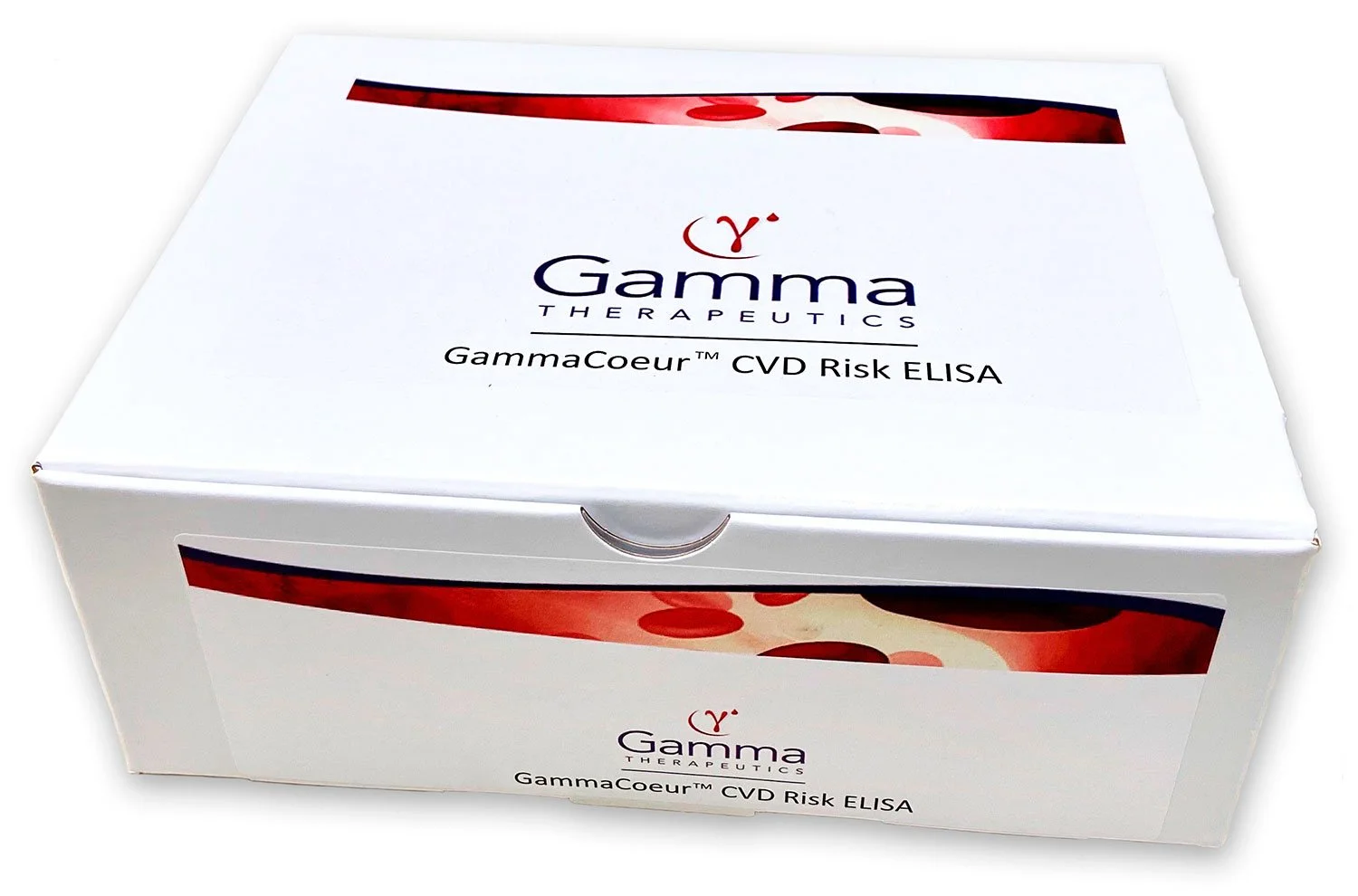GammaCoeur™
CVD Risk ELISA Test System
GammaCoeur™ is a semi-automated quantitative ELISA method for the detection and assessment of Gamma Prime Fibrinogen (GPF) in human venous plasma samples for use in clinical and research laboratories.
GPF Testing enables earlier and accurate detection of a patient’s risk of clotting, thus improving treatment options, patient outcomes and survival.
-
GammaCoeur™ is intended to be used as part of a risk assessment in adults suspected of/at risk for cardiovascular disease (CVD), for example, adults with hypertension, increased BMI, diabetes, history of smoking, or family history of CVD.
It is a semi-automated quantitative ELISA method for the detection and assessment of GPF in human venous plasma samples for use in clinical and research laboratories.
-
Fibrinogen is a heterogeneous mixture of isoforms with varying relative proportions. Alternative mRNA processing and posttranslational modifications give rise to several different fibrinogen isoforms with widely varying characteristics. In addition, because fibrinogen is a 6-chain molecule containing 2 copies each of the Aα, Bβ, and γ chains, various combinations of altered chains can be assembled, particularly in fibrinogens resulting from heterozygous polymorphisms or mutations. The fibrinogen γ chain has 2 isoforms, the gamma A (γA or simply γ) isoform and the gamma-prime (or γB) isoform. The gamma-prime isoform arises from alternative mRNA processing that results in the substitution of the carboxyl terminal 4 amino acids with a different 20-amino acid sequence. The gamma-prime chain is usually paired with the more common γA chain.
Gamma-prime fibrinogen typically constitutes approximately 10% of total fibrinogen in plasma, although this percentage can vary among individuals. Gamma-prime fibrinogen has several biochemical and biophysical properties that distinguish it from the more common γA isoform. Clots made from fibrinogen containing gamma-prime chains in the presence of factor XIII are highly resistant to fibrinolysis. In addition, the gamma-prime chain contains a binding site for thrombin, and clots made from gamma-prime fibrinogen have been reported to have an altered clot architecture.
As a result of these properties, recent studies suggest that gamma-prime fibrinogen is a risk factor for cardiovascular disease. An association has been found between gamma-prime fibrinogen concentrations and prevalent coronary artery disease, myocardial infarction, stroke, and inflammation. -
The GammaCoeur™ assay is a two-site sandwich immunoassay that measures the gamma-prime fibrinogen isoform in human plasma samples. Gamma-prime fibrinogen in the sample binds to a monoclonal capture antibody coated on the assay plate microwells. After incubation, excess sample (including unbound non-gamma-prime fibrinogen [i.e., gammaA/gammaA fibrinogen] and other plasma components) are removed by washing. Enzyme-labeled polyclonal anti-fibrinogen detection antibody is added, which binds to the captured gamma-prime fibrinogen, forming a “capture antibody/analyte/detection antibody” sandwich. After another incubation, excess detection antibody is removed by washing. Finally, a substrate for the enzyme-labeled detector is added to generate a colored product. After a last incubation, a stop solution is added to each well and the absorbance of the colored end-product is read on a spectrophotometer. The amount of colored reaction product formed is proportional to the amount of enzyme-labeled antibody bound to analyte, which is in turn proportional to the amount of gamma-prime fibrinogen present in the sample. All reagents required are provided in the GammaCoeur™ Test Kit.
-
System utilizes Gamma Prime Fibrinogen (GPF), which forms fibrinolysis resitant clots
Independently associated with CVD
Framingham study shows patients in top 1/3 gamma prime fibrinogen with 3x odds of heart attack
CE Marked


